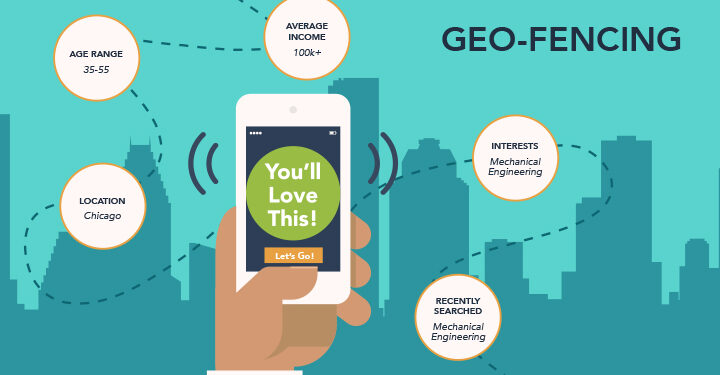In spite of the fact that individuals rarely stay inside one area for lengthy periods of time, location-based marketing is just as crucial as it has always been, if not more important.
Geotargeting, as well as geofencing, are both examples of geolocation marketing, which is advertising that’s also targeted to customers in a specific geographic region. In an age when so many people are always on the go, businesses may utilize these marketing methods to produce new leads anywhere their existing consumer base may be located.
While the terms “geo” and “marketing” are sometimes used interchangeably in branding meetings, they are not always the same thing at all. Therefore, deciding between geo targeting and geofencing may make or break a successful advertising campaign, and it is critical to grasp the differences between the two before devoting your advertising budget to them. Here are a few things that you must know before hiring a geolocation database provider.
Geo-fencing
Utilizing your device’s global positioning system (GPS) or Internet Protocol (IP) address, which is the same as your virtual address, geo-fencing allows you to create a virtual barrier around a certain place. While potential clients are accessing the web on a computer, laptop, or mobile device, advertisements inside geo-fenced zones can be displayed. Geo-fencing may be set up in any size radius around a certain site, ranging from a mile to an entire state, according to technical specifications. However, when most people talk about geo-fencing, they are talking about a relatively small radius surrounding a certain spot in their minds. There is a common myth about geo-fencing that as you enter the fence, you will receive push alerts or SMS messages to your smartphone. This is not true. Instead, geo-fencing displays advertisements to those who are on the inside of the geo-fenced radius while they are browsing the web, such as alerting them to a local discount or the distance you stand from a certain retail location.
What exactly is geotargeting?
Similar to geofencing, geotargeting is a medium of marketing that targets customers in a specific geographic area.
However, unlike geofencing, geotargeting allows you to aim your advertisements toward people who satisfy the exact criteria you specify in your campaign. Depending on the industry or service’s target market, you may choose to advertise straight to high-income homes in a Boston area or to hockey fans as they leave a nearby ice rink.
Through geo-targeting, you can select the interests and behaviors you want to target, including which geographic place you want to reach them from.
In spite of the fact that geotargeting is a technique used in internet marketing, it is also used in out-of-home advertising (OOH). Consider a mural painted on a building across the street from a hospital with only an advertisement for nursing shoes – these are examples of outdoor advertising alternatives, more properly known as geo-targeting, that are available at the workplace. You can l;oook for the best geolocation database providers online.
When should geofencing be used?
Geofencing is advised for shops whose products and services are suitable for customers from a wide range of age groups (beverages, food, etc.) As we have previously discovered, geofencing accurately identifies the position of the user by utilizing GPS data: from the country to the street and the house. What marketers can do at this point is use geofencing-specific advertising formats, such as push advertisements, and tune performance parameters to attract customers in their immediate vicinity.
Using geofencing to separate yourself from the competition may also be quite useful in some situations. The most notable example is the Dunkin’ Donuts geofencing advertising, which discouraged consumers from owning coffee from certain places and instead rewarded them with discount coupons.
When should you utilize geotargeting?
If geofencing is advised for shops whose products and services are suitable for a broad range of demographics, geotargeting may be the most effective strategy for merchants targeting more particular niches. Retailers of high-end jewelry, for instance (demographic women aged 25-50). Another example is a heating and air conditioning firm that solely targets homes as customers. Geotargeting, which is available practically everywhere in the world through programmatic media-buying platforms, may be used to target non-specific market segments as well. In addition, the platform’s targeting tools, which include a number of demographics, will assist brands in personalizing messaging if they wish to reach out to a variety of different audience groups.
Geolocation-based marketing services actually take advantage of the current situation and provide them the opportunity to reach out. Whenever this technology is used in conjunction with content that effectively communicates your message and demonstrates your competence, new doors could be opened. Contact the most reliable geolocation database providers online.














